Do you remember where you were in February 2015? A Scottish mom named Cecilia Bleasdale posted a picture of a dress she was thinking of wearing to her daughter’s wedding. It went viral, and suddenly, the internet was in a total frenzy.
Some people swore the dress was blue and black, while others were convinced it was white and gold. The debate blew up, with millions of tweets flying in just a week. Celebrities, news anchors, and even families got caught up in the chaos, all over a simple photo.
But here’s the thing: this wasn’t just another internet meme. It actually turned into a mind-blowing example of something deeper: what we see isn’t always what’s really there.
As vision scientist Dr. Jay Neitz put it, this dress was “one of the biggest individual differences I’ve ever seen.” For Dr. Hyeyoung Shin, a neuroscientist at Seoul National University, the whole thing hit close to home. She was all-in on the blue and black team and couldn’t wrap her head around how anyone could see it differently.
This viral moment sparked a whole decade of research. Eventually, it led to a study that explains what’s really going on. Turns out, the dress wasn’t some optical illusion, but a window into how our brains create our own version of reality, one that’s meant to help us survive.
Our brains don’t just passively record what’s out there. They actively make sense of things, often based on assumptions.
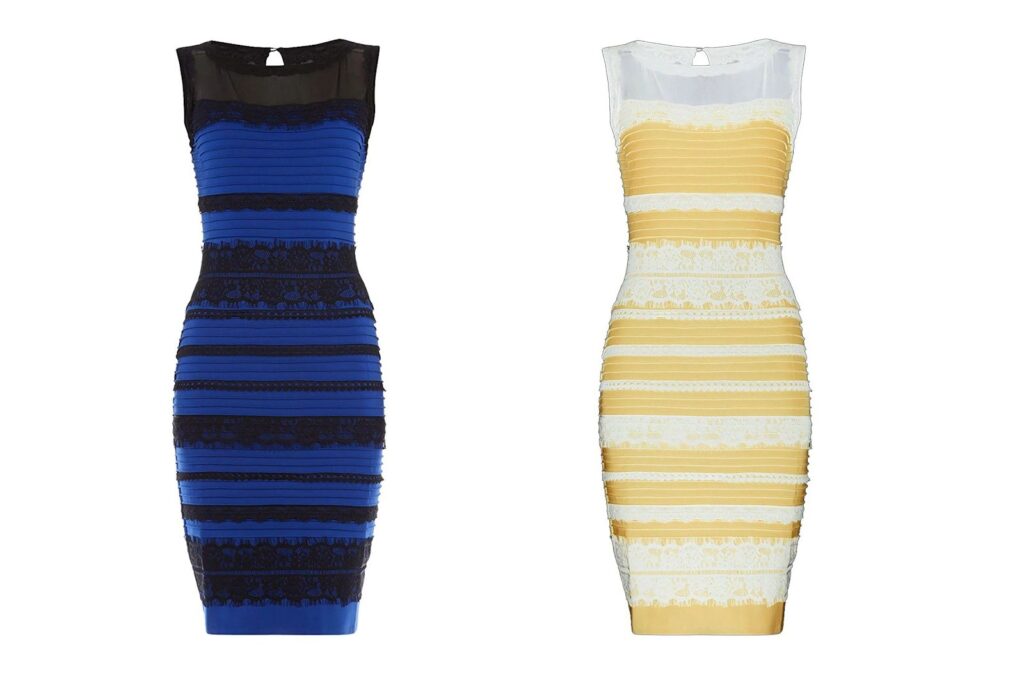
In the case of the dress, the photo was overexposed, which made the lighting unclear. Some people assumed the dress was in a shadow and mentally “removed” the blue tint of the shade, seeing it as white and gold.
Others thought it was under yellowish artificial light, so they mentally took out the yellow, leaving blue and black. The dress, as it turns out, was actually blue and black.
But the point is that our perception can feel totally real, even when it doesn’t match the physical world.
Also See: This Scientist Says We’re Living in The Matrix And He Has Evidence to Prove It
Contents
- 1 Your Brain Is an Artist, Not a Camera: Filling in the Gaps in What You See
- 2 How Your Brain Creates Reality: A Spark in the Visual Cortex
- 3 Survival of the Quickest: Why Your Brain Prioritizes a “Useful” Reality
- 4 The Shared Illusion: How We Agree on a “Predictive Code”
- 5 Are We Trapped in a Survivalist’s Story?
Your Brain Is an Artist, Not a Camera: Filling in the Gaps in What You See
We usually think of our eyes like cameras and our brain as a recorder, just capturing whatever we see. But modern neuroscience has shown us that’s not really how it works.
Your brain is more like an “intelligent guesser” that actively fills in the blanks. This process, called “inference,” is how your brain makes its best guess about what’s going on around you, based on limited information and everything you’ve experienced in your life.
A great example of this is the Kanizsa triangle illusion. In this trick, three shapes that look like Pac-Man are arranged to point inward. Most people instantly see a bright white triangle floating over three black circles, even though there’s actually no triangle drawn at all.

Your brain just assumes that the edges line up and are part of the same object, so it fills in the missing parts to create the shape. It’s your brain using its built-in rules to interpret the world.
This “filling-in” process is a key part of a big theory called predictive coding. It suggests that your brain isn’t just passively waiting for sensory information to come in. Instead, it’s constantly making predictions about what it expects to see, hear, and feel.
What you consciously experience is a mix of these predictions and the actual sensory info you get. The brain mostly focuses on “prediction errors,” the moments when things don’t match what it was expecting.
This isn’t a flaw in how we see the world. It’s actually a clever way to save energy. If the brain had to process every tiny bit of sensory data from scratch, it would be exhausting. So instead, it’s designed to focus on what’s new or surprising, saving a ton of mental effort.
How Your Brain Creates Reality: A Spark in the Visual Cortex
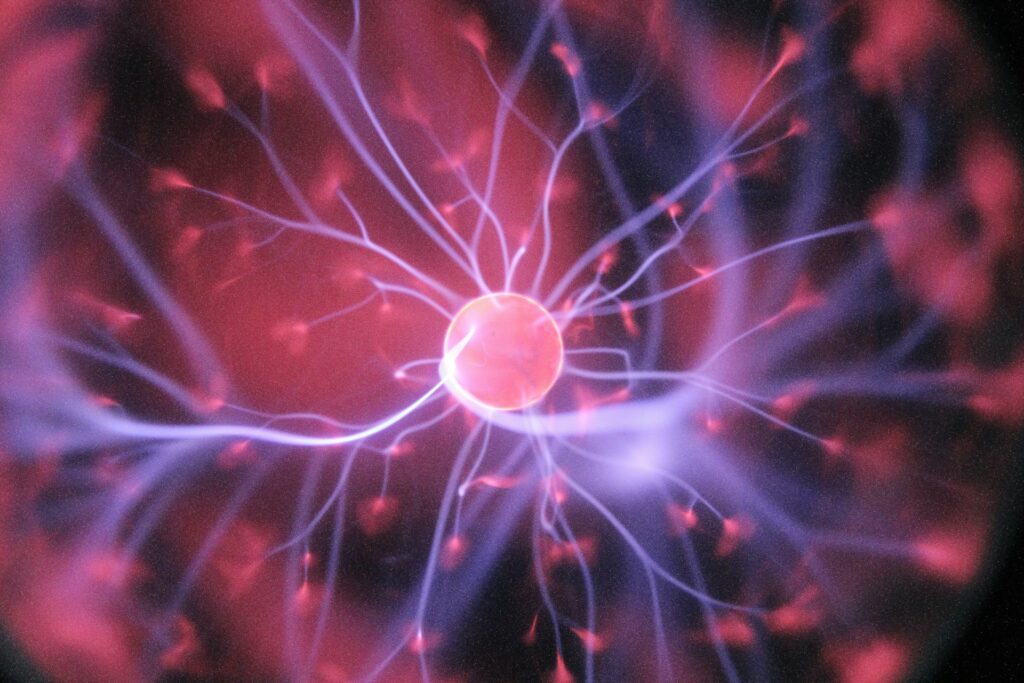
So, we know your brain fills in the blanks, but how exactly does it do that? Dr. Shin’s recent study, published in Nature Neuroscience, gives us a pretty jaw-dropping answer. Her team figured out the exact group of cells responsible for kicking off these visual illusions, showing us that your brain starts creating its version of reality right from the very first stage of vision.
It all begins in the primary visual cortex (V1), which is located at the back of your brain. V1 is where all the visual information from your eyes first lands. It’s like the brain’s first stop for anything you see.
Dr. Shin and her team wanted to figure out whether this part of the brain was just “taking pictures” or if it was already starting to help decide what we actually see.
In an incredible experiment, they used ultra-precise holographic lasers to activate a tiny, specific group of neurons in the V1 of mice. The big question was: if they “sparked” these cells, could it make the brain see something that wasn’t really there? And the results were amazing.
When those specific neurons were activated, the mice’s brains lit up like they were seeing shapes, like the Kanizsa triangle, even though they were just staring at a blank screen.
They named these cells “IC-encoder neurons” (Illusion Contour-encoders). What they found is that even a tiny signal from these neurons can spread out, calling in tens of thousands of other neurons to “fill in” the missing parts and complete the image.
This is a game-changer because it shows that the process of “filling in” doesn’t happen later on in the brain. It starts right at the very first stage of processing visual info.
These neurons aren’t just interpreting blurry images; they’re actively setting up the instructions to create a full, complete picture in your mind. This discovery gives us real biological evidence for how your brain is constantly creating its own version of reality.
Survival of the Quickest: Why Your Brain Prioritizes a “Useful” Reality
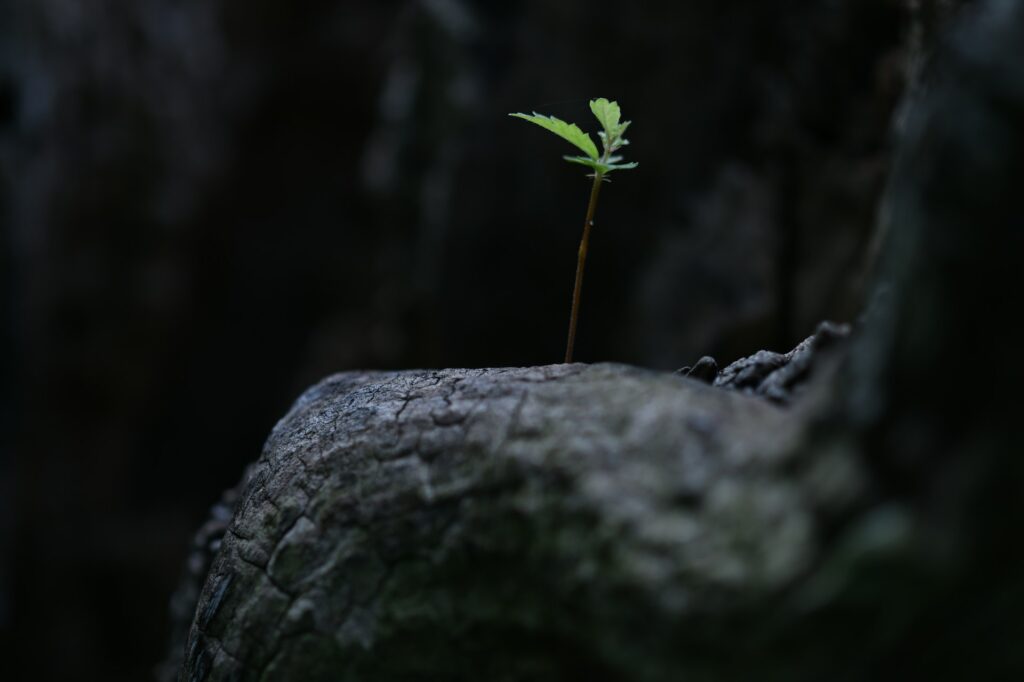
If our brains are constantly creating our own reality, you might wonder: why? Why would evolution favor a system that makes stuff up instead of one that sees everything exactly as it is? The answer is simple, and kind of harsh: survival.
As Dr. James Hyman, a psychology professor at the University of Nevada, Las Vegas, explains, “The brain isn’t trying to give us the ‘true’ picture of the world; it’s trying to give us a useful one. What matters most is survival.”
In nature, speed and efficiency matter a lot more than getting everything 100% right. Dr. Hyman uses a great example: imagine a monkey swinging through trees. It doesn’t have time to carefully study every shape and shadow. It quickly assumes, “brown is branch, green is not”—and then moves on.
This shortcut works because it’s fast and, most of the time, spot-on. The monkey that stops to think, “Is that brown thing a branch or a snake?” is the one that ends up as dinner.
This survival-first mindset ties directly into how the brain is built for energy efficiency. The brain uses up a ton of energy, so it’s constantly trying to save as much as possible. The predictive coding model, where the brain focuses only on new or surprising info, is a great way to conserve energy.
Instead of wasting energy analyzing every detail in a familiar environment, the brain keeps its resources for things that matter, like that sudden rustling in the bushes. Some studies even say this helps save up to 12% of the brain’s energy.
So, the reality we experience isn’t perfect. There’s a trade-off. We sacrifice some accuracy for speed and energy efficiency. Our ancestors didn’t have the luxury of thinking everything through. They needed a version of reality that helped them survive, and fast.
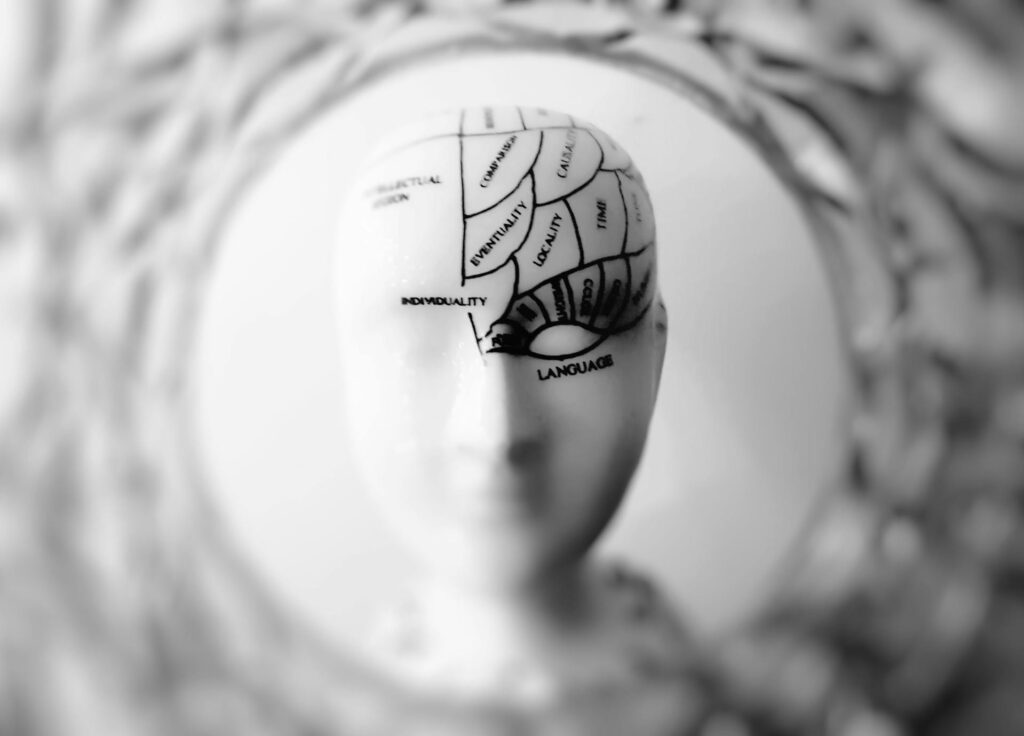
If everyone’s brain is creating its own version of reality, how do we all manage to agree on anything? How can we navigate streets, build societies, or even have a conversation if we’re all living in our own private worlds? The answer is that, while our individual realities are personal, they’re all built from the same basic blueprint: a shared predictive code.
As Dr. Shin puts it, “The more our sensory worlds overlap, the more we share the same ‘predictive code.'” Our brains are building reality based on a set of rules and assumptions that have been shaped by millions of years of evolution and a lifetime of shared experiences.
Take the Kanizsa triangle once again, for example. Everyone sees that illusory triangle because our brains have learned that aligned edges usually belong to the same object.
And this isn’t just something unique to humans; monkeys, mice, owls, and even bees all see these same visual patterns. That shows the predictive code is wired into the biology of any creature that needs to make sense of a physical world full of objects.
Our shared predictive code comes from the basic laws of physics. For instance, light almost always comes from above (like from the sun), objects cast shadows, and things that are closer appear bigger. Our brains have evolved to expect these things as normal.
These expectations, or “priors,” are what our brains use to fill in the gaps when we’re perceiving the world. This is why, in general, our realities align pretty well. We’re all running slightly different versions of the same core operating system—one that’s been perfected for life on Earth.
This helps explain the whole “Dress” debate, too. Most of the time, what we see is pretty clear-cut. But when we encounter something like a poorly lit, overexposed photo, it throws our brains off and forces them to rely more on personal experiences.
People who spend more time in natural, blue-toned daylight (the “larks”) were more likely to see the dress as white and gold, while those who are used to yellowish artificial light (the “owls”) were more likely to see it as blue and black.
Even in this case of major disagreement, no one saw the dress as red or green. The predictive code was still working within a shared framework, even if we saw things differently.
Are We Trapped in a Survivalist’s Story?
From a viral dress debate to sparking neurons in a mouse’s brain, the evidence is clear: your brain doesn’t just passively take in reality. It actively creates its own version of it.
And this isn’t some “controlled hallucination,” as Dr. Shin quickly points out. It’s just the brain’s way of interpreting everything it sees based on years of experience and deep evolutionary instincts.
But could we ever see “true” reality? Dr. Shin isn’t so sure. To do that, she says, we’d have to shut down the constant feedback loops happening between different parts of the brain, the very thing that makes these predictions possible.
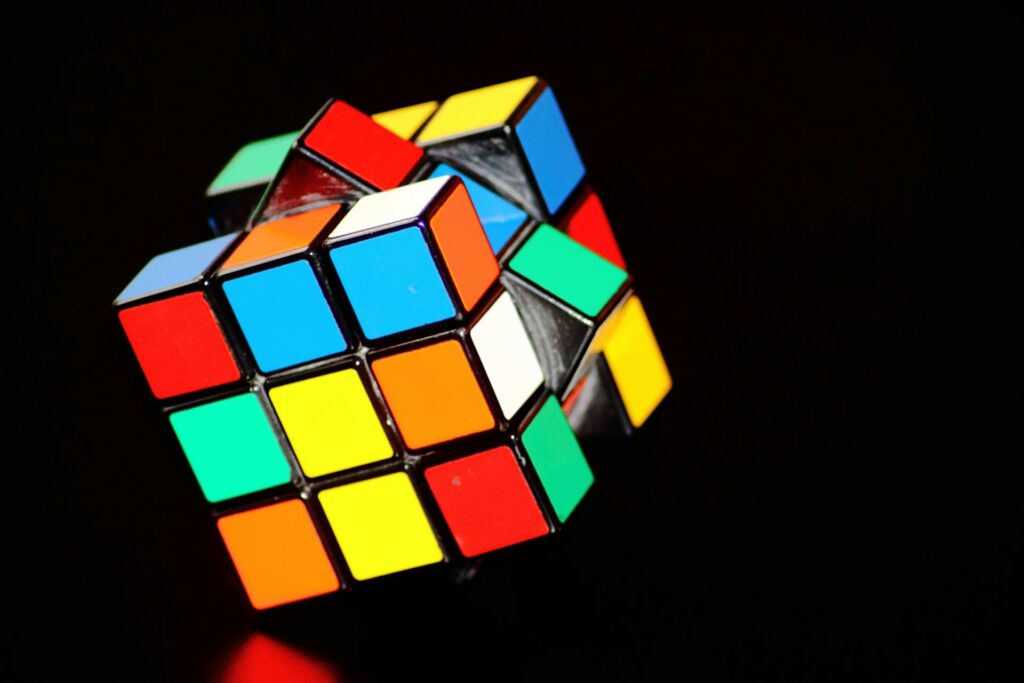
In other words, we’d need to rewire our brains from scratch. We’re kind of stuck, in a way, with the very system that lets us perceive anything at all.
So, here’s the unsettling part: our perception of the world feels solid, stable, and real. But now we know it’s actually a carefully crafted model, a survival story being told to us by our neurons. That might sound a bit disheartening, but it’s also kind of amazing.
All of these things are part of a brilliant, evolution-driven design. But it also leaves us with a big question: if our brains are creating our own version of reality, what does the “real” world actually look like?